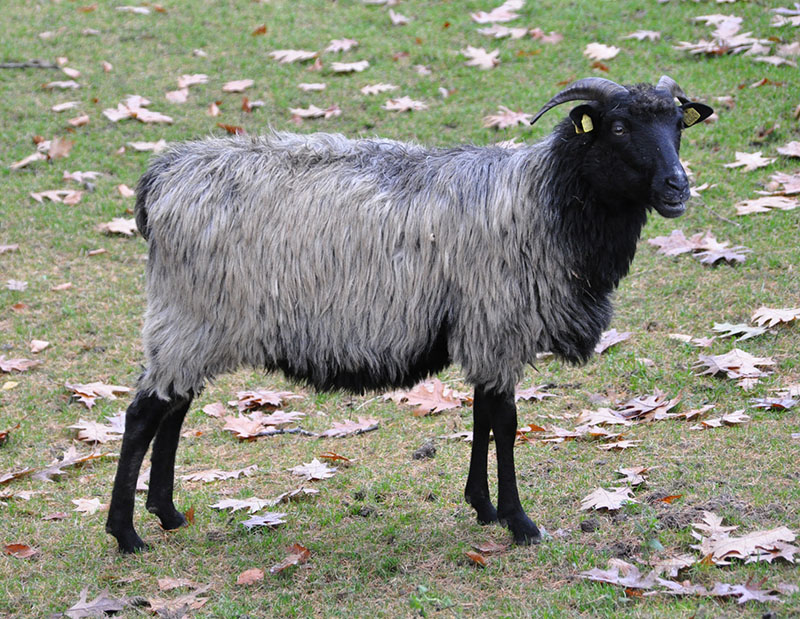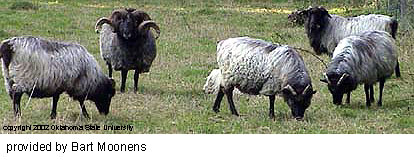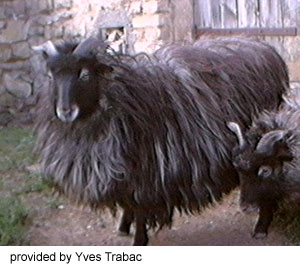Graue Gehoernte Heidschnucke Sheep
Also Known By: Gray Horned Heath Sheep
The Graue Gehoernte Heidschnucke is the symbol of the Lueneburger Heide in Germany. Their ancestors, the Mouflon were at home in Corsica. Today’s Heidschnucke settled down on a dry, heathy area, the Lueneburger Heide, which is protected today and is nestled in-between Hannover and Hamburg. Flocks of these frugal sheep stay outside year round, and feast on heather and birch tree shoots, thus preserving the Lueneburger Heide (Heathy area of Lueneburg) as open landscape. They are very robust, but don’t thrive in extremely wet or cold areas. The Heidschnucke found its way to breeders all over Germany.
Single lambs are born in spring with a curly, black fleece. After the sheep’s first yearly shearing, its wool turns silver gray with a black bib. Head and legs are black and free of wool. Rams weigh up to 80 kg, and have imposing horns that curl close to the face. Ewes weigh about 45 kg and have short horns. Their meat tastes like venison.
The dual-coated fleece of a ewe weighs 2 kg, of a ram 4 kg. The coarse, straight outer coat is 25 cm long. The downy underwool grows 6 cm long and has a fiber diameter of 25-30 microns. The wool used to be sent to Belgium and Turkey to be worked into carpets.
References
ZIEGEN UND SCHAFE, Klaus Loehle/ Wolfgang Leucht, Eugen Ulmer Verlag Wollgrasweg 41 70599 Stuttgart Germany
WOLLE VOM SCHAF, Nowak, Forkel



